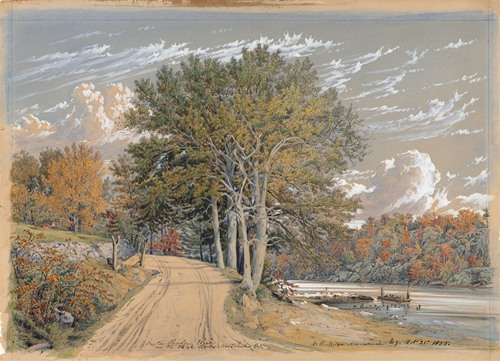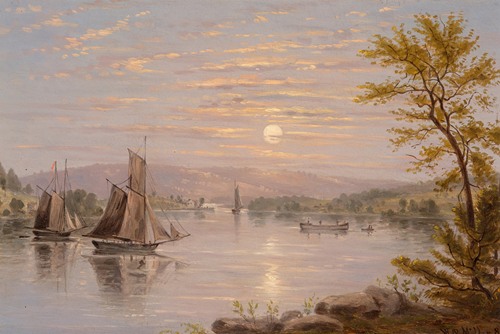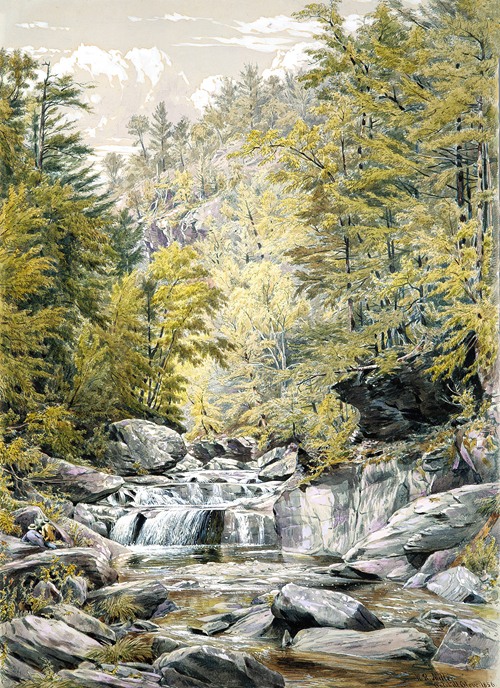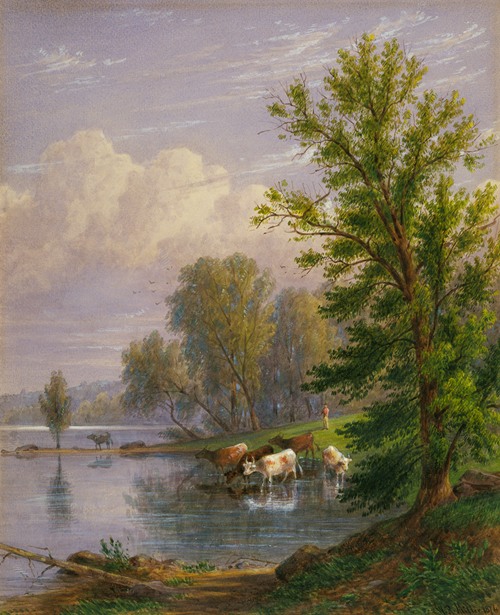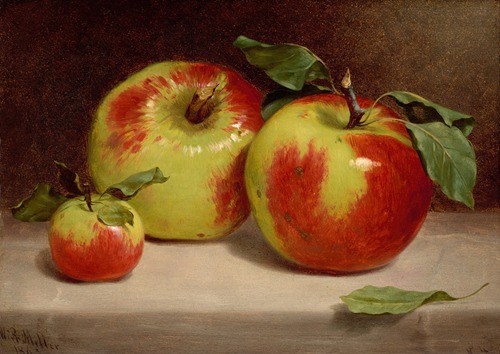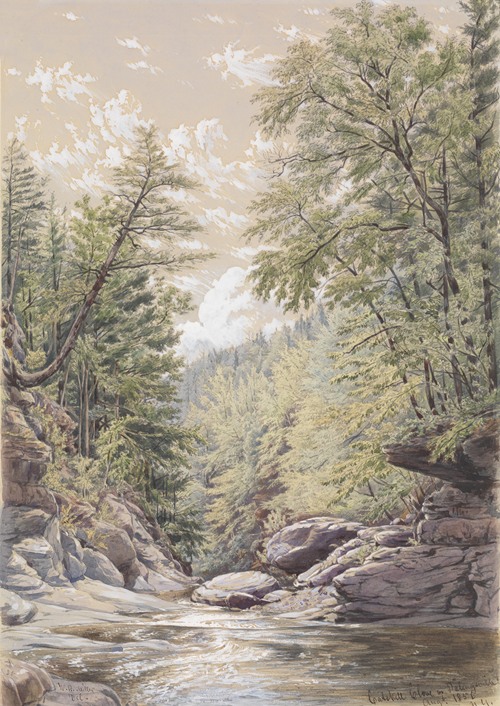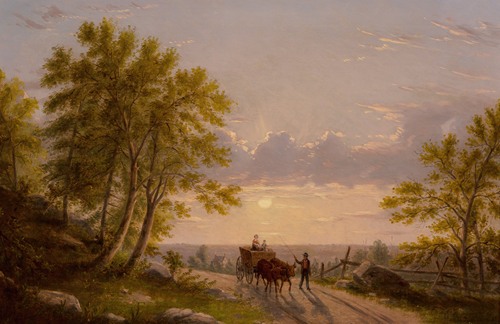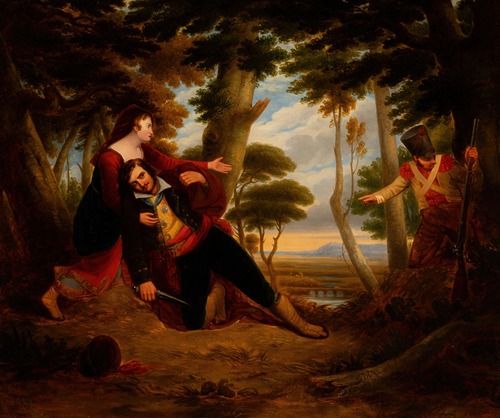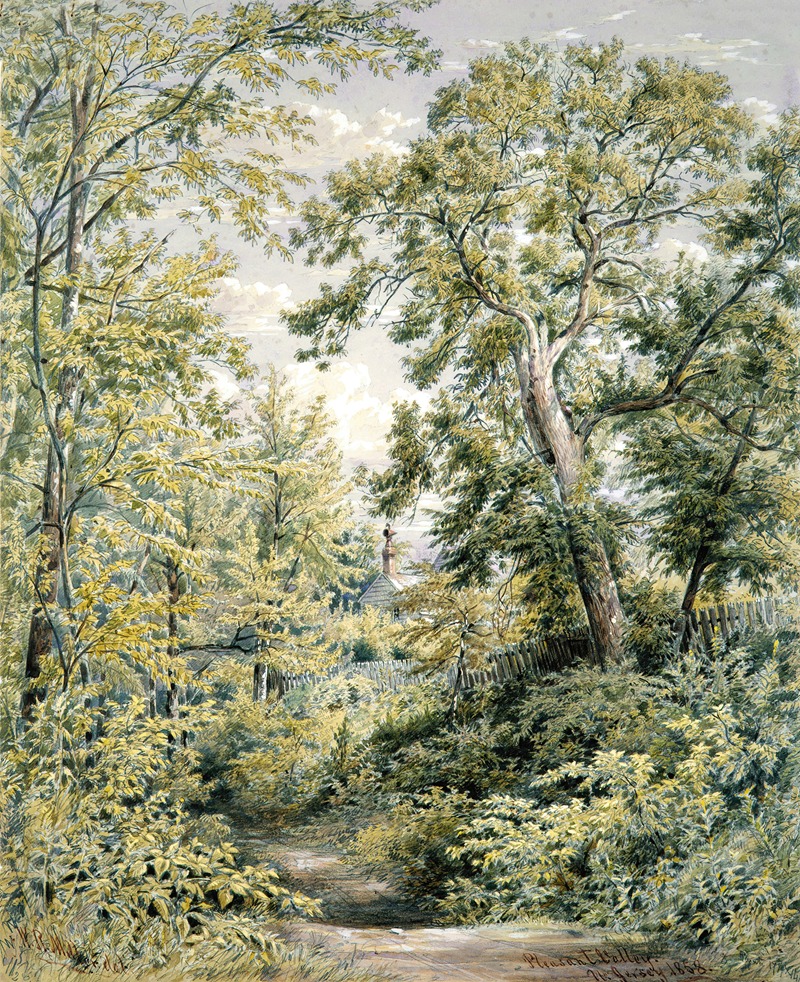
William Rickarby Miller was born in the village of Staindrop, County Durham, on 20 May 1818. The son of a landscape and animal painter, Joseph Miller, he received his first artistic training from his father. As a young man, Miller would practice his craft by sketching local townspeople. One such portrait attracted the attention of an unknown patron, who paid for him to travel to London to continue his studies. In the winter of 1844, he emigrated to the United States of America with a sister and two brothers, settling first in Buffalo, New York. After arriving in America, Miller began finding inspiration in the landscape of upstate New York.
His first documented American landscape, an idyllic mountain scene of Buffalo (now in the collection of the New-York Historical Society), was produced in 1845, the same year he began exhibiting at the National Academy of Design. In 1847, he moved to New York City, where he began making a living through portraiture and illustration, as well as selling his watercolours through the American Art-Union, a subscription-based organisation tasked with educating the public to national art, whilst also providing a support system for emerging American artists. Though the AAU was short-lived, operating from 1839 to 1851, it became the largest art union in America, and is credited with significantly raising the profile and popularity of American art.
From 1851, Miller had been working out of his home at 1 Perry Street in the Greenwich Village area of Manhattan and by 1853, Miller’s career as a talented illustrator was firmly established. That year, he completed his first book illustration commission, for G. P. Putnam and Company’s Homes of American Authors, while his illustrations began appearing regularly in illustrated weeklies such as Gleason’s Pictorial Drawing-Room Companion and, from its foundation in 1855, Frank Leslie’s Illustrated Newspaper. Despite his success as an illustrator and portraitist, Miller’s passion remained in his regular sketching trips to the Hudson River Valley, Niagara Falls and Virginia, from which he would produce meticulous watercolours and oils of the American landscape. Though he frequently painted in the Hudson River Valley, Miller was not a member of the Hudson River School, founded by Thomas Cole and made famous by artists such as Frederic Edwin Church and Albert Bierstadt. Miller’s landscapes were keenly detailed and intimate compositions, at odds with the more dramatic aesthetics of the Hudson River School.
In 1868, Miller moved his studio to the Dodworth Building at 806 Broadway (which would become the first site of the Metropolitan Museum of Art from 1871 to 1873), though around this time his magazine assignments and commissions began to decline. Miller considered dropping his career and joining the art dealership M. Knoedler & Co, before his artistic career was saved by the patronage of Henry W. Gear, an artists’ supplier, George M. Wing, an agent, and John L. Chambers, a secretary. From 1873, Miller became primarily occupied with producing pen and ink drawings for a book on American landscapes entitled, A Thousand Gems. Though the book was never published, the drawings provided much of the material for his later work in watercolour and oil. The patronage he enjoyed in his later career allowed him to explore other genres and he became known for still lifes, cityscapes and maritime scenes. During his lifetime, he exhibited at the Brooklyn Art Association, where he was also a member; the Woodstock Art Association; National Academy of Design; and the Pennsylvania Academy of the Fine Arts. In his later years, Miller led something of a secluded life, dedicating his time to travelling and sketching in rural surroundings. It is believed that he died on one such sketching trip in July 1893.
His work is held in the collections of the Smithsonian American Art Museum (Washington D.C); Metropolitan Museum of Art (New York); and particularly the New-York Historical Society, which holds his original diary and almost 200 examples of his work.

